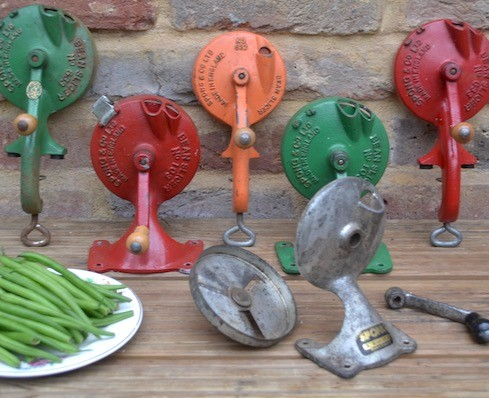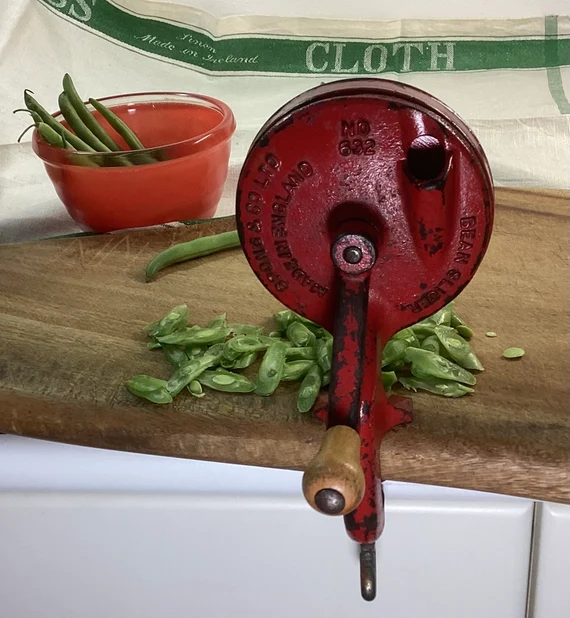Bean slicers are a must-have kitchen tool for anyone who loves the crisp, fresh taste of perfectly sliced beans. These handy gadgets simplify the process of preparing green and runner beans, transforming them into thin, uniform slices that cook evenly and look fantastic on your plate. From their historical roots to their modern-day utility, bean slicers remain an indispensable tool in the culinary world.
Let’s dive into everything you need to know about bean slicers, including their types, tips for usage, and their fascinating history.
What Are Bean Slicers?

Bean slicers are specialized kitchen tools designed to French-slice beans into thin, consistent pieces. Whether you’re prepping green beans for a hearty casserole or slicing runner beans for a stir-fry, these tools save time and effort while ensuring professional-level results.
Their main purpose is efficiency. By creating uniformly thin slices, bean slicers allow for faster cooking and a more aesthetically pleasing presentation of your dishes.
The Different Types of Bean Slicers
Over the years, bean slicers have evolved to include a variety of designs and functionalities. Here’s a closer look at the most common types:
1. Manual Bean Slicers
Manual bean slicers are the simplest version. They often feature a block with an open area where wires or blades are strung tightly. You manually press the beans through the wires to create slices.
- Pros: Easy to use, requires no electricity, compact.
- Cons: Time-consuming for large batches, requires physical effort.
2. Hand-Cranked Bean Slicers
These are a step up in efficiency. A hopper feeds the beans into the slicer as you turn a hand crank. Many models can handle multiple beans at once, and some even remove the stringy sides of runner beans during the slicing process.
- Pros: Faster than manual slicers, ideal for processing larger quantities.
- Cons: Bulkier than manual slicers, often requires a stable surface to clamp onto.
3. Electric Bean Slicers
Some high-end kitchen appliances, such as certain Kenwood models, include attachments specifically designed for slicing beans. These electric slicers are perfect for those who frequently prepare large batches of beans.
- Pros: Extremely fast and efficient, minimal physical effort required.
- Cons: Expensive, requires electricity, and takes up more storage space.
Why Choose Hand-Cranked Bean Slicers?
Hand-cranked bean slicers are among the most popular for their balance of speed and simplicity. These slicers allow you to process a glut of beans quickly, making them perfect for preserving beans through freezing or salting.

While they may not produce the same long, clean slices as manual slicers, their ability to handle multiple beans at once makes them a favorite among gardeners and home cooks dealing with a large harvest.
How to Use a Bean Slicer Like a Pro
Using a bean slicer is straightforward, but a few tips can help you get the most out of your tool:
1. Prep Your Beans
- For runner beans, pare off the stringy sides with a knife before slicing.
- Wash the beans thoroughly to remove dirt and debris.
2. Position Your Slicer
- If using a hand-cranked slicer, secure it to a stable surface. Older models often clamp onto a table, while newer ones may use suction cups.
- Place a plate or bowl beneath the slicer to catch the slices as they come out.
3. Feed the Beans
- Insert the beans into the hopper of a hand-cranked slicer or press them through the wires of a manual slicer.
- For electric slicers, follow the appliance’s instructions to ensure smooth operation.
Cooking Tips for Sliced Beans
Once you’ve beautifully sliced your beans, here’s how to make the most of them:
- Quick Blanching: For freezing, blanch sliced beans in boiling water for 2-3 minutes, then plunge them into ice water to preserve their vibrant color and texture.
- Even Cooking: Thin, uniform slices cook faster and more evenly, so keep a close eye on your beans to avoid overcooking.
- Flavor Pairings: Sliced beans work wonderfully in stir-fries, soups, salads, and casseroles. Pair them with garlic, butter, or a splash of soy sauce for a quick, delicious side dish.

The Fascinating History of Bean Slicers
Bean slicers have a surprisingly rich history that dates back to the 1860s. During this era, the first bean slicers, like the Batkins model, were invented and quickly became popular.
The Spong & Co. Legacy
One of the most iconic names in the bean slicer industry is Spong & Co. Founded by James Osborn Spong, the company was renowned for its high-quality household utensils.
Spong’s bean slicers were a staple in kitchens worldwide, even finding their way into royal households. Known for their durability and efficiency, these slicers remain a symbol of ingenuity and practicality.
A Tool for All Seasons
The invention of the bean slicer coincided with a period of increased focus on food preservation, as home cooks sought ways to store fresh produce for the winter months. These tools allowed families to prepare and preserve beans more efficiently, ensuring they had access to nutritious food year-round.
Why Bean Slicers Are Still Relevant Today
Despite the advent of modern kitchen appliances, bean slicers remain a beloved tool for several reasons:
- Efficiency: They make quick work of slicing beans, saving time and effort.
- Consistency: Uniform slices ensure even cooking and a professional presentation.
- Sustainability: Preparing and preserving your own produce reduces food waste and promotes sustainable living.
Whether you’re a home gardener with a bumper crop of beans or a culinary enthusiast who values precision, a bean slicer is a worthwhile addition to your kitchen arsenal.
Conclusion: A Timeless Kitchen Essential
Bean slicers are more than just a practical tool—they’re a nod to the timeless art of home cooking and food preservation. From their humble beginnings in the 1860s to their continued use today, these gadgets have earned their place in kitchens around the world.
Whether you prefer the manual precision of a handheld slicer or the speed of a hand-cranked model, there’s no denying the utility and charm of these tools. So, the next time you’re faced with a pile of fresh beans, grab your slicer and enjoy the satisfying process of turning them into perfect, uniform slices.
Happy slicing!


